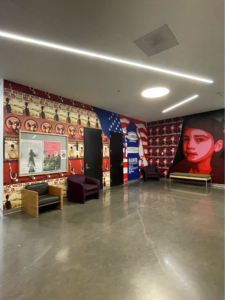Five things to do on Indigenous Peoples Day
In 2016, the city of Boulder declared the second Monday of October as Indigenous Peoples Day. Here are five ways to honor, celebrate and recognize the Indigenous experience.

The History of Indigenous Peoples Day
October 10, 1942 marks the day Christopher Columbus landed in the Americas.
Originally, the Columbus Day holiday was founded to celebrate Italian Americans’ heritage and to recognize their mistreatment in the 19th century. President Franklin D. Roosevelt declared Columbus Day as a national holiday in 1934.
However, for Indigenous people, Columbus Day is hurtful as it glorifies a violent past. For them, the day Columbus landed in the Bahamas marked the start of a turbulent history that led millions to their death and others into forced assimilation.
“Indigenous Peoples Day is about resilience of what past cultures have endured as much as it is about honoring heritage,” said Scott Stevens, a citizen of the Akwesasne Mohawk nation and director of the Native American and Indigenous Studies Program at Syracuse University in a USA Today article.
The push for the renaming of the day first began in 1977 at a United Nations conference held to address Indigenous discrimination. Since then, South Dakota was the first state to replace Columbus Day with Indigenous Peoples Day in 1990, and many other states have since followed. Currently, 14 states and well over 130 cities observe Indigenous Peoples Day instead of, or in addition to, Columbus Day. In 2016, the city of Boulder declared the second Monday of October as Indigenous Peoples Day.
Ultimately, the holiday is about recognition, reflection, education, and celebration of Indigenous history, culture and contributions. It’s a time to learn about the Indigenous experience in the United States in the past as well as the present.
Here are five ways to get involved on Indigenous Peoples Day:
1. Attend an Indigenous Peoples Day community event
The City of Boulder is currently hosting several days of Indigenous Peoples Day celebrations that began Saturday and will continue through Wednesday. There will be four virtual events and two in-person events held on the CU Boulder campus. These events will touch on a wide range of topics from generational trauma and healing, storytelling through embroidery, revitalization of Indigenous language, the Land Back Movement, Boulder’s role in the Sand Creek Massacre and the American Indian Law Program at CU Boulder’s Law School. For more information, visit the Indigenous Peoples Day Community Events website.
2. Visit a mural by an Indigenous artist on campus

“Gregg Deal’s Mural”
In 2018, CU Boulder unveiled a mural done by Indigenous contemporary artist Gregg Deal in the Visual Arts Complex basement. As a member of the Pyramid Lake Paiute Tribe, Deal’s work challenges and thereby disrupts misrepresentations of Indigeneity in Western popular culture and highlights the aftermath of colonialism and genocide. One part of the mural that stands out is Deal’s spin on a spray paint can. Deal reimagines the packaging and creates his own personal brand named Romantic Nationalism: a type of patriotism as a result of political authority over another set of individuals. He also placed a danger warning stating the following: “Culturally and socially flammable, irritates languages, traditions and self worth. May cause death. Contains Manifest Destiny.”
The mural sets out to generate conversations about the low Native student population and the historical presence of stolen land. First, CU Upward Bound (a federal TRIO program designed to motivate and support students from disadvantaged backgrounds) worked to create a space for underrepresented students in order to empower them. According to the CU 2021-22 Diversity Report, American Indian/Alaska Native students made up only 0.1% of the student population. Ultimately, CU Upward Bound stated they hope Native students upon viewing the mural will feel welcomed, supported, and connected to the university. Second, they push us to consider how CU Boulder is able to expand because of an exploitative history and to take the time to honor the space.
3. Watch a documentary
From the comfort of your home, you can engage by watching a documentary. On Kanopy, there is an extensive collection of films under the Indigenous studies category. You simply need your CU Boulder IdentiKey to log in, since the school provides students with a free subscription. A good starting place is the film Gather: The Fight to Revitalize our Native Foodways.
4. Read a book by an Indigenous Author
There are books you can read to learn more about the Ute, Arapaho and other tribes tied to the Boulder Valley. Here are five Native authors from Denver, Boulder, and Colorado Springs: Erika T. Wurth’s, Penelope Kelsey, Clint Carroll, David Heska Wanbli Weiden, and Jennifer Elise Foerster. Click on this website for a more detailed list about each author and their retrospective works. Moreover, the book “Bad Indians: A Tribal Memoir” by Deborah A. Miranda is a story about past struggles for Californian Indians and Miranda’s work to preserve and redefine culture in the modern age.
5. Hike a trail with Indigenous history
Consider taking a hike with the Indigenous perspective in mind. The People’s Crossing, located in West Boulder, is believed to have been the location of where Arapaho Chief Left Hand notified Nebraska gold seekers of the 1851 Treaty of Fort Laramie. The treaty stated they could not remain on the land, an area now known as Settlers Park. Today, the trails see about 98,500 annual visitors.

